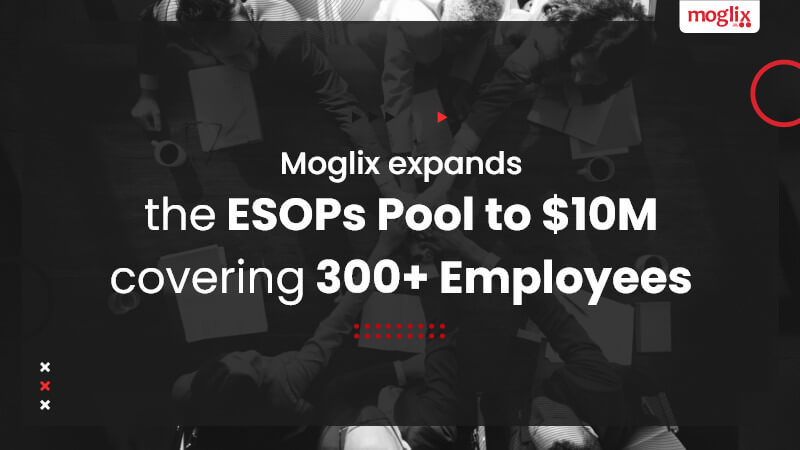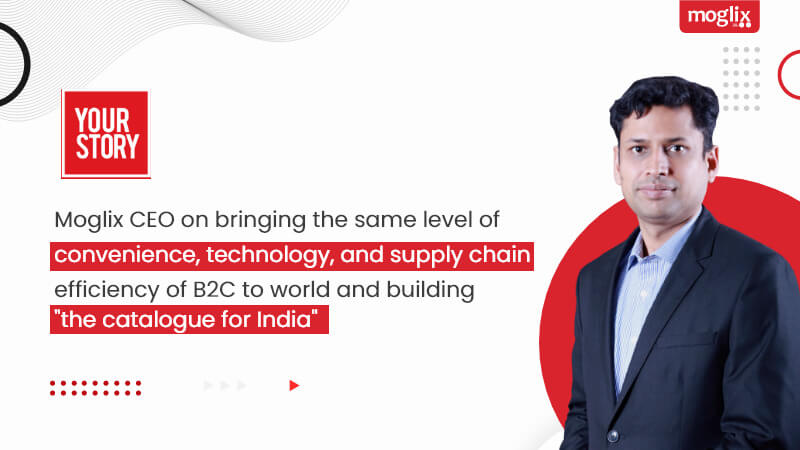Moglix Expands Business to the UAE

Moglix Expands Business to the UAE
Moglix enters the UAE as part of its global expansion plans. We will enable enterprises across the Manufacturing, Oil & Gas and Infrastructure sectors to transform their end-to-end supply chain, from procurement to distribution. Through our digital platform, supplier and buyer network, and logistics strength,
we bring down cost, enhance sales, improve operational efficiency, and make the supply chain touchless.
“We are excited to enter the UAE. UAE is a gateway to the GCC and a major hub of global commerce and innovation with a vision to transform into a Digital economy. The UAE government’s mission and investment in digital upskilling is unmatched and we are looking to collaborate with local talent to jointly drive digital transformation. Our vision to build the operating system for commerce is closely aligned with the Digital UAE initiative to make the UAE a Smart Country and we are looking forward to empowering stakeholders to achieve this goal.“
says Rahul Garg, CEO and Founder, Moglix
Moglix recently raised its Series E round of funding led by Falcon Edge Capital through their Abu Dhabi based Alpha Wave Ventures, becoming the first B2B Commerce unicorn in the manufacturing sector, with a total funding of $220 Million and a valuation of $ 1 Billion
Moglix expanding ESOPs Pool by $10M covering 300+ employees

Moglix expanding ESOPs Pool by $10M covering 300+ employees
Moglix has expanded its ESOP pool further by $10 Million to include more than 300 employees under the program. We have also announced an ESOP buyback program worth $3 Million for all eligible employees with vested stocks on the heels of its recent fundraise. Employees will be able to sell up to 25% of their vested shares during the buyback.
“We believe ESOPs represent ownership mindset and belief in the vision. Typically B2B and Manufacturing are not seen as attractive sectors for talent. But through our ESOP program and our work culture, we want to make it rewarding and meaningful to work in B2B. We want to enable long-term wealth creation for employees and recognize their contribution and commitment.”
says Rahul.
One of the early joiners, Pankaj Kumar, who heads engineering and has been with Moglix for five years, shares, “Participating in the ESOP buyback was my “KBC” moment. You don’t imagine the scale of impact ESOPs can make in wealth creation, it can bring multi-generational change in just a few years. I have not encashed most of my ESOPs, as I know that no other investment can give these kinds of returns, and this is the confidence I have in the potential of Moglix.”
Moglix recently entered the unicorn club with the latest fundraising round from Falcon Edge Capital and Harvard Management Company. With end-to-end supply chain operations from sourcing to financing, 30+ warehouses, and a team strength of ~1000 employees, Moglix is Asia’s largest and fastest-growing B2B Commerce company focused on manufacturing and infrastructure
Moglix CEO on building the Catalogue for India

Moglix CEO on building the Catalogue for India
“India operated pretty much without catalogues pre-Moglix. I would take the liberty of saying that Moglix is the catalogue for India.”
This is a powerful statement. But in his 15 years of professional career and six years of entrepreneurial journey, Moglix Founder and CEO Rahul Garg has proved that it can be the most disruptive company in the manufacturing sector globally.
“I started with the goal to bring the same level of convenience, technology, and supply chain efficiency that we see in our consumer world to the B2B world. And that is how we will build the infrastructure and capabilities, which will be required in the next 20 to 50 years for our country to become a manufacturing infrastructure powerhouse across the world,”
says Rahul.
Rahul’s ambition is to see India become a $10 trillion economy over the next 10 years, but that would need a collective effort from the country, he says.
While Moglix is busy strategising its global expansion plans, Rahul emphasis that the dent is far smaller given the size of the sector.
Strengthening the supply chain of essential equipment and vaccines

Strengthening the supply chain of essential equipment and vaccines
After leaving a trail of death and disaster the second wave of Covid-19 is finally showing signs of abating. This is a golden opportunity for all stakeholders in India’s manufacturing supply chain to act now to delay the third wave.
The only long-term solution to fight Covid is vaccination. Central consolidation of vaccine procurement to the tune of 75%, with a 25% window for private hospitals will resolve several vaccine supply chain challenges. As seen in the case of Operation Warp Speed in the United States, a centrally administered vaccine procurement model will alleviate the bad Nash equilibrium emanating competition among state governments to procure vaccines on their own and foster greater collaboration.
Long-Term Focus: A National Supply Chain Stress Test for Critical Resources
A national supply chain stress test for critical resources may be conducted every financial quarter.
It should consist of three layers of descending priority levels:
- To encompass items covered under the Essential Commodities Act.
- To include the raw materials required by vaccine manufacturers deployed in the COVID19 vaccine.
- To cover materials required in the infrastructure vertical.
Mukund Vasudevan joins team Moglix as SVP :Strategic Partnerships

Mukund Vasudevan joins team Moglix as SVP :Strategic Partnerships
Mukund Vasudevan joins Moglix as SVP, Strategic Partnerships. He will be leading large transformation initiatives for Moglix customers and vendors globally. Vasudevan brings over 28 years of global leadership experience in the manufacturing and chemical sectors
I am passionate about manufacturing and making in India for the world. I am excited about Moglix’s vision to create the operating system of the future for the manufacturing sector. I look forward to being a part of the Moglix journey to make B2B supply chains more efficient through the use of technology,
Vasudevan said.
B2B Commerce Unicorn Moglix Acquires Vendaxo

B2B Commerce Unicorn Moglix Acquires Vendaxo
Moglix is proud and delighted to announce our recent acquisition of Vendaxo, an e-commerce platform for buying and selling used machinery. In a quest to build the operating system for the manufacturing sector, this acquisition will bring together complementary portfolios of manufacturing assets and will enable us to provide faster and scalable solutions to a larger number of customers at ease.
Vendaxo provides used machinery liquidation solutions to MSMEs and companies like Siemens, Arvind India, Marico, Raymond, and Torrent Pharma. This integration of Vendaxo in the Moglix ecosystem will prove to be a significant step in strengthening the vision of creating a sustainable and capital-efficient manufacturing ecosystem.

 My vision for Moglix is to change the face of industrial commerce: Rahul Garg
My vision for Moglix is to change the face of industrial commerce: Rahul Garg Now and Next in the Infrastructure Sector
Now and Next in the Infrastructure Sector Moglix enabled Agile MRO Procurement at Scale through Workflow Digitization of large EPC company
Moglix enabled Agile MRO Procurement at Scale through Workflow Digitization of large EPC company